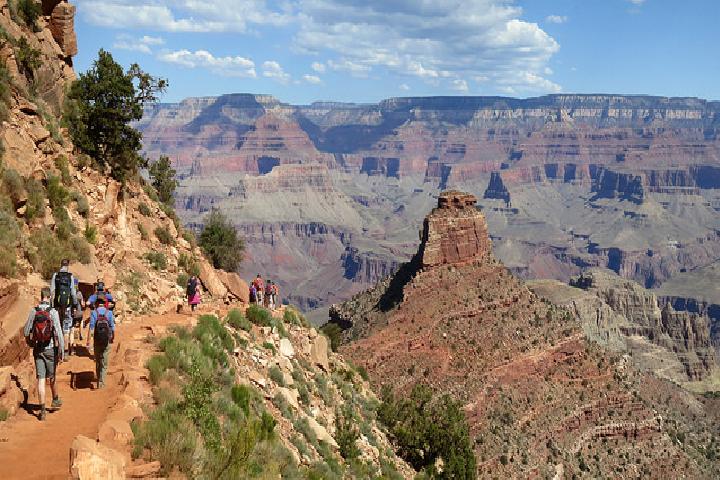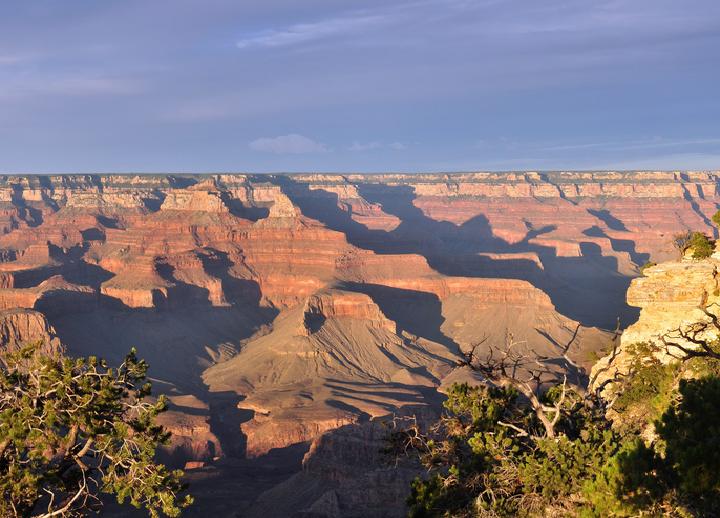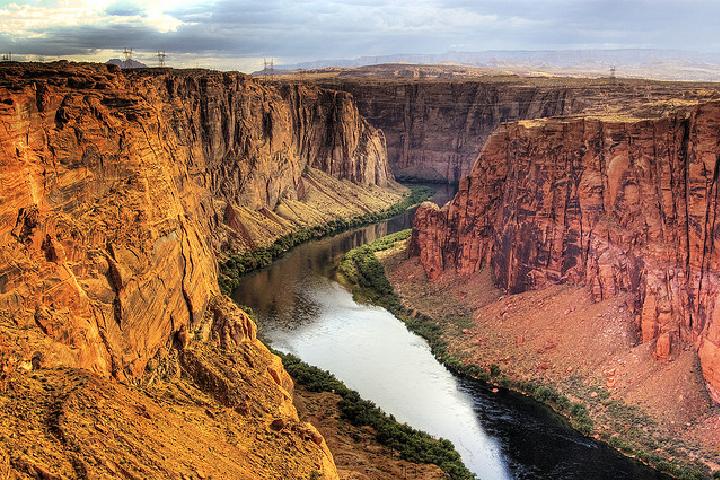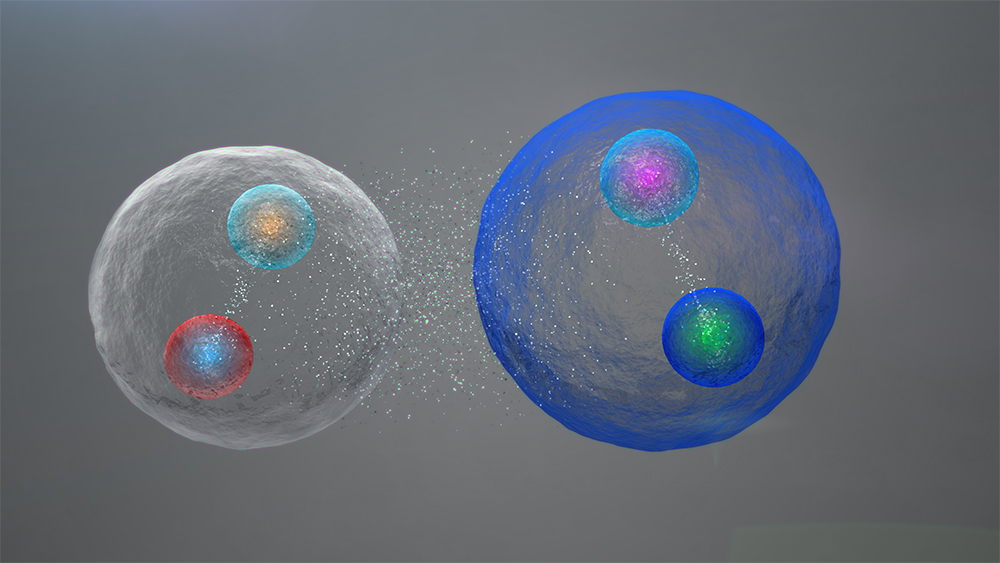Have you ever seen a deep valley with steep rock sides and a stream or river flowing through it? That’s a canyon!
Grand Canyon, as the name suggests, is a mighty canyon in the state of Arizona, US. The grand canyon is 277 miles (446 km) long, around 18 miles (29 km) wide and around 1 mile deep. To give you an idea of how huge it is, if Grand canyon were flat and you were driving through at a speed of 60km per hour, you would take over 7 hrs to cross it!

But the grandness of the canyon is not the only thing that impresses you when you see it.
Grand canyon is famous for its beauty. The rocks of the canyon are in gorgeous hues of brown, orange and green. This masterpiece of nature was declared a national park in 1919. It gets around 5 million visitors each year. It is one of the seven natural wonders of the world.

Grand canyon is on the Colorado plateau and was carved out by the enormous Colorado river. Do you know that the Colorado river flows through seven U.S. and two Mexican states? Erosion due to its immense strength has created the canyon. Over a million years, the river has cut through layers and layers of rocks. Almost 40 sedimentary rock layers exposed due to erosion. Overwhelming isn’t it!
To geologists all over the world, the rocks of the grand canyon speak out. They speak out history. It is like secret information that geologists have to decode. Geologists have recently found out that the river set its course through the canyon 17 million years ago. The rocks that Colorado river has cut through to form this canyon are even older, they are billions of years old. Radiocarbon dating is an advanced technique used to find out the age of the rocks.
Researchers have unearthed many fossils at grand canyon such as leaf and dragonfly wing impressions, and footprints of scorpions, centipedes, and reptiles. Some ancient fossils like algal mats date back to 1,200 million to 740 million years ago.
Many habitats thrive in this vast canyon. Forests thrive at the top of the canyon while deserts thrive at the bottom. This wide range of habitats and climates have made Grand Canyon National Park a very important wildlife area. Found in the park are over 1,500 species of plants, 355 types of birds, 89 kinds of mammals, 47 reptiles, 9 amphibians, and 17 fish.
Grand canyon has been explored by many Spanish and American explorers over the years. The first European to explore Grand Canyon was García López de Cárdenas from Spain, who arrived in 1540. American John Wesley Powell took a daring trip to explore the Colorado river and the canyon for the first time in 1869. Till then this portion was a blank on the map of United States of America.
So, when are you heading out to explore Grand Canyon?
Image Credit: Featured Image by Wolfgang Staudt, from Flickr





Leave a Reply